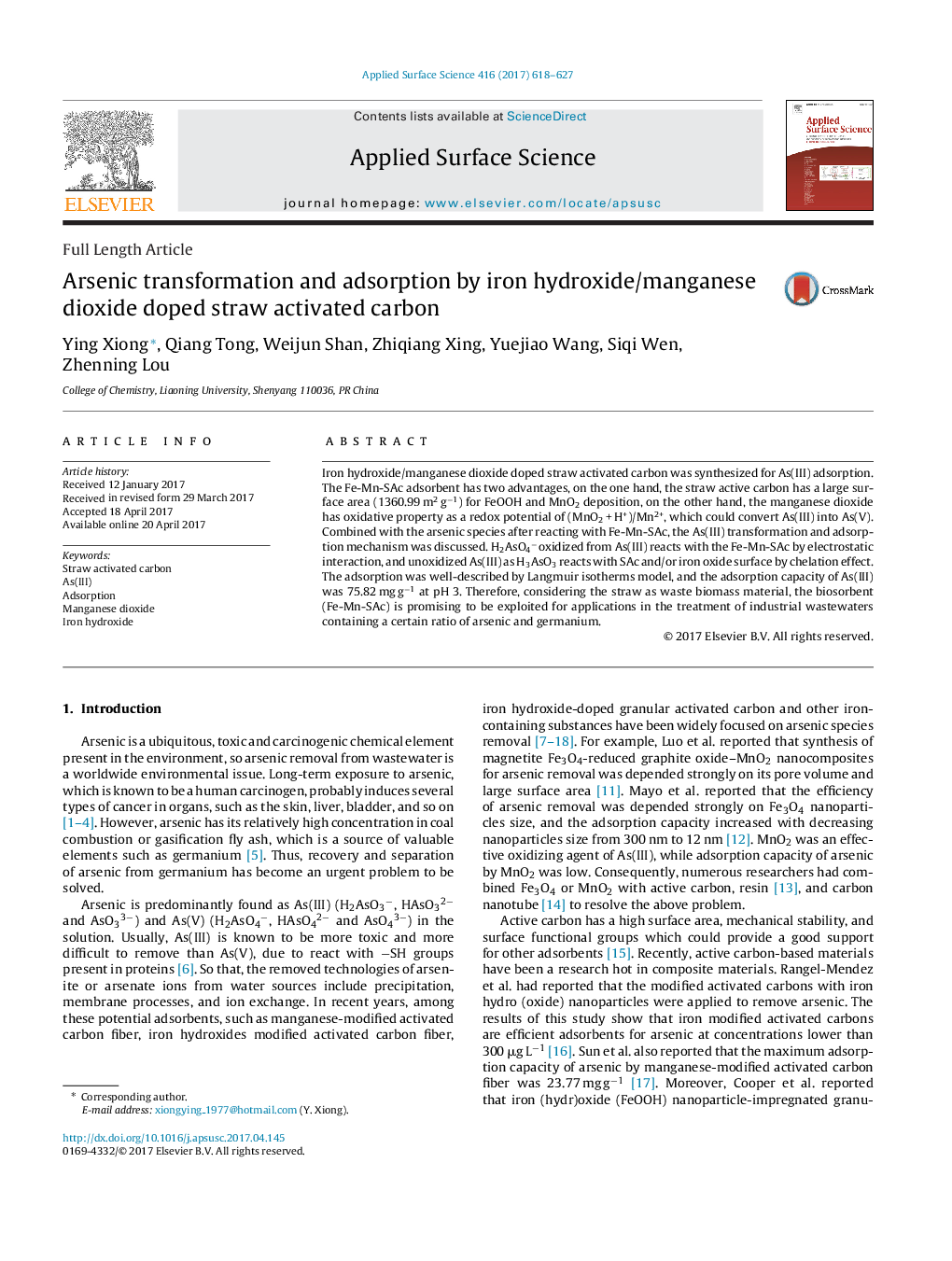| Article ID | Journal | Published Year | Pages | File Type |
|---|---|---|---|---|
| 5350482 | Applied Surface Science | 2017 | 10 Pages |
â¢A waste straw adsorbent doped by iron hydroxide/manganese dioxide was synthesized.â¢It exhibited excellent performance of adsorption at pH 3.â¢It is applied in the recovery and separation of arsenic from germanium.
Iron hydroxide/manganese dioxide doped straw activated carbon was synthesized for As(III) adsorption. The Fe-Mn-SAc adsorbent has two advantages, on the one hand, the straw active carbon has a large surface area (1360.99 m2 gâ1) for FeOOH and MnO2 deposition, on the other hand, the manganese dioxide has oxidative property as a redox potential of (MnO2 + H+)/Mn2+, which could convert As(III) into As(V). Combined with the arsenic species after reacting with Fe-Mn-SAc, the As(III) transformation and adsorption mechanism was discussed. H2AsO4âoxidized from As(III) reacts with the Fe-Mn-SAc by electrostatic interaction, and unoxidized As(III) as H3AsO3 reacts with SAc and/or iron oxide surface by chelation effect. The adsorption was well-described by Langmuir isotherms model, and the adsorption capacity of As(III) was 75.82 mg gâ1 at pH 3. Therefore, considering the straw as waste biomass material, the biosorbent (Fe-Mn-SAc) is promising to be exploited for applications in the treatment of industrial wastewaters containing a certain ratio of arsenic and germanium.
Graphical abstractDownload high-res image (150KB)Download full-size image
